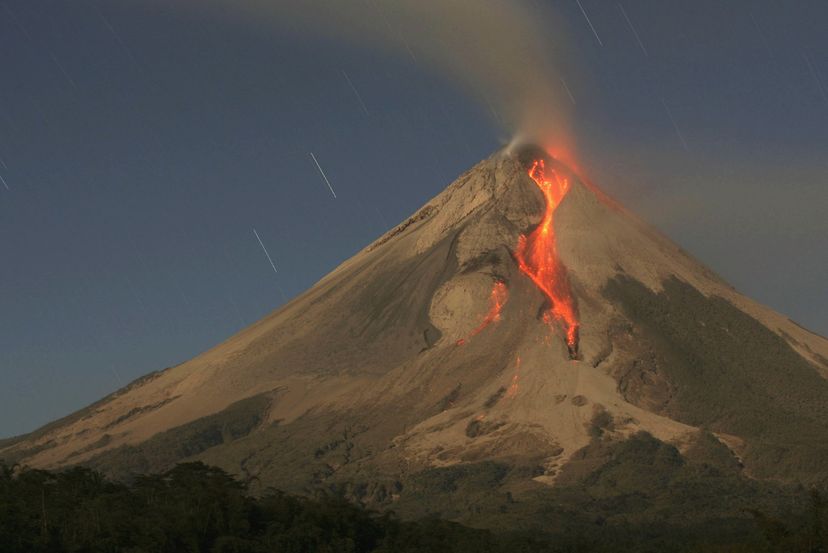
About This Quiz
Paleogeography is the study of the geography of paleos, right? Perhaps you could use a little brushing up on your paleogeography knowledge — or a starter course. Either way, this quiz will have you combining your paleo and geo knowledge in no time.Those who study paleogeography are interested in the physical environment of the past.
Ooh, that means there are more supercontinents to name that came before Pangaea ...
Although it stretched across the globe, it's kind of like the Pacific's ancestor.
Advertisement
While it's important to see where we came from, we also need to know where we're going.
Rocks and minerals can give insight into the strength and direction of Earth's magnetic field at different points in history.
Between those two facts, we can determine where rocks and minerals were originally deposited and how plate tectonics moved them.
Advertisement
Yeah, turns out that every 200,000 to 300,000 years the poles reverse.
After about 780,000 years, we're due for another reversal!
The Hawaiian Islands are a well-known example of hot-spot tracks and can help us determine the age and movement of land masses.
Advertisement
By studying where and how plants and animals migrate or move, we can get some clues to the shifting of continents and land.
Rainfall, temperature and other climate markers can give us an idea of ancient trends.
Certain rocks form under specific climate conditions, so we can nail down some context for climate by studying things like coal and tillites.
Advertisement
The lithosphere of Earth consists of the hard crust and the very upper part of the mantle.
The rock that makes up continents isn't easily subducted, so it's been around a long time.
The movement of mountains proves useful to those studying geography.
Advertisement
While we mostly think about continents moving together to form mountains, peaks can also occur when continents rift.
It'd be rather exciting if dirt piles the size of the Andes appeared after a gale, but alas, they were formed by the subduction of the ocean lithosphere.
The Appalachian mountain range is estimated at 300 million years old — much older than the Rockies or Himalayas, despite being much smaller.
Advertisement
The theory of continental drift was controversial and problematic in many ways, but it was a precursor to plate tectonics.
Coastlines change extremely fast, based on rising and lowering sea levels. They've developed within the last 12,000 years.
The edge is demarcated by the continental slope and rise, which is often far at sea.
Advertisement
A lot of Earth was covered by sea for most of its history.
Both of these factors cause sea-level changes, which is linked to climate change.
So through rain, kind of.
Advertisement
Water's been around for a while — approximately 4.6 billion years.
Nope, it's not just Earth rearranging the furniture. It occurs through seafloor spreading and plate tectonics.
Seafloor spreading occurs where tectonic plates diverge.
Advertisement
Understanding sedimentary basins is an important part of petroleum geology.
Studying paleogeography allows us to learn about biological evolution, too.
The continents had different mammalian fauna, and while some native South American species migrated up, most of the South American fauna went totally extinct in the fight for supremacy and space.
Advertisement